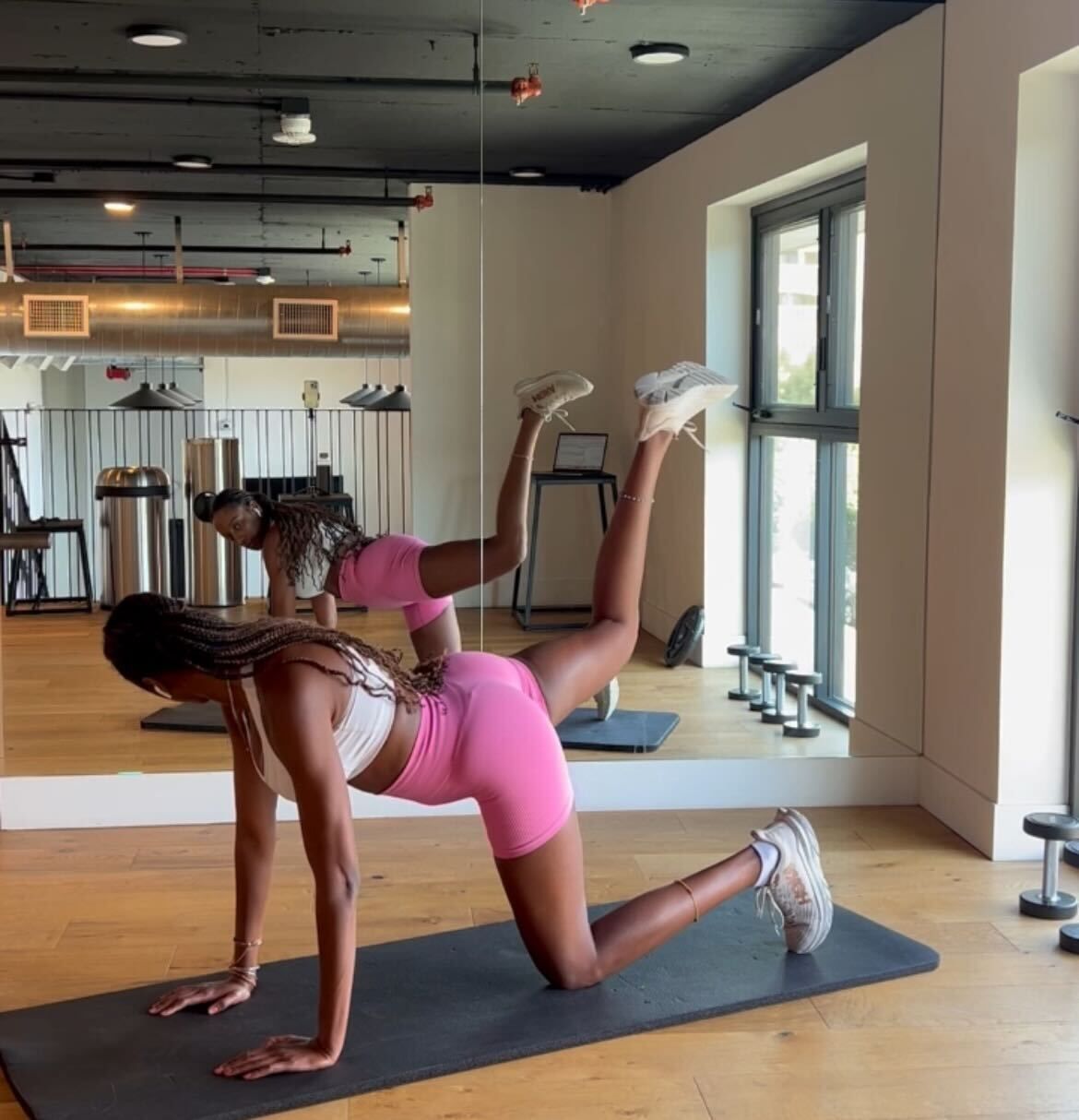The Basics of Women's Weight Lifting for Beginners
Hey Motivated people!
Many women ignore Weight-lifting because they think it'll make them look too muscular or because they feel intimidated by the gym culture. But lifting weights can be empowering and helpful for women, no matter their age or how fit they are. In this guide, we'll cover the basics of lifting weights for women who are just starting. We'll also clear up some common misunderstandings and give you useful advice to get you started on your journey to being stronger and healthier.
What is Weight-lifting?
Weight-lifting is a type of exercise in which you use weights, like dumbbells or barbells, to build strength and muscle mass. It involves lifting and lowering weights in controlled movements to work different muscle groups in your body. This activity helps improve overall strength and tone muscles and can contribute to better health and fitness.
What does Weight-lifting do to a Woman's Body?
- Increased muscle strength enhances posture, reduces injury risk, and boosts physical performance.
- Improving bone density lowers osteoporosis risk, promoting better bone health.
- Enhanced metabolism aids in weight management and fat loss.
- It sculpts and tones the body, creating a lean physique without bulking up.
- Achieving strength milestones boosts confidence and self-esteem.
- Weight-lifting reduces stress and improves mood by releasing endorphins.
- It benefits heart health by lowering blood pressure and improving cardiovascular function.
- Functional fitness improves daily tasks' ease and maintains independence.
- Regular workouts improve sleep quality and duration.
- Long-term benefits include reducing chronic disease risk and improving overall health and longevity.
What is the Ideal Weight for a Woman to Lift?
The best weight for a woman to lift depends on her strength, fitness level, and the exercise she's doing. It's good for women to start with light weights and increase slowly as they get stronger and more confident. It's important to do exercises with the right form to avoid getting hurt. Many experts say doing 8-12 reps with good form helps build muscle and strength well.
But what's right for a
woman lifting weights varies depending on her goals and abilities. Talking to a fitness expert can help you figure out the right weight for different exercises and personal situations. Additionally, looking at
women's weight-lifting records can offer inspiration and insights into what's achievable with dedication and proper training.

How Many Days a Week Should a Woman Lift Weights?
How often a woman lifts weights depends on her goals, fitness level, and schedule. Usually, it's good for women to do weight-lifting workouts 2-3 times a week. This helps them get stronger, tone muscles, and be more fit. Doing this allows enough time for muscles to rest and grow stronger.
Some women lift weights more often, like 4-6 times a week, if they have specific goals or really enjoy it. But it's important not to overdo it and to listen to your body. Mixing in different types of exercises, like cardio or stretching, can also keep workouts interesting and prevent boredom. Getting advice from a fitness expert can help you make a plan that's right for you.
Common Myths Debunked
One of the most prevalent myths surrounding women's Weight-lifting is the fear of becoming overly muscular or "bulky." In reality, women typically lack the testosterone levels necessary to achieve the bulkiness often associated with male bodybuilders. Instead, weight lifting can sculpt and define muscles, resulting in a toned and lean physique. Furthermore, lifting weights does not make women "masculine" but rather celebrates their strength and capabilities.
Essential Equipment and Gear for Women's Weight Lifting
Choosing the Right Apparel
When embarking on a weight-lifting journey, it's essential to wear comfortable and breathable clothing that allows for freedom of movement. Opt for moisture-wicking fabrics that help keep you cool and dry during intense workouts.
Selecting the Proper Weight Lifting Equipment
Investing in quality weight-lifting equipment is crucial for ensuring safety and maximizing performance. Start with essentials such as dumbbells, barbells, and kettlebells, and gradually add more specialized equipment as you progress.
Proper Form and Technique
Importance of Correct Form
Maintaining proper form and technique is paramount in Weight-lifting to prevent injuries and maximize results. Focus on executing each exercise with controlled movements, emphasizing proper alignment and posture throughout.
Common Mistakes to Avoid
Some common mistakes beginners make include lifting too heavy, sacrificing form for weight, and neglecting rest and recovery. To avoid injury and setbacks, take the time to learn proper technique and listen to your body's cues.
Creating a Beginner's Workout Plan
Setting Realistic Goals
Before starting a weight-lifting routine, take the time to set realistic and achievable goals based on your fitness level and personal aspirations. Whether your goal is to build muscle, lose weight, or improve strength, having a clear vision will keep you motivated and focused.
Designing a Women's Weight Lifting Routine
A well-rounded workout plan should incorporate a variety of exercises targeting different muscle groups. Include compound movements such as squats, deadlifts, and bench presses, along with isolation exercises to target specific areas of the body.
Progression and Tracking Your Success
Monitoring Your Progress
Tracking your progress is essential for gauging improvement and staying motivated. Keep a workout journal or use fitness tracking apps to record your workouts, track weights and repetitions, and monitor changes in strength and endurance over time.
Adjusting Your Routine
As you become more experienced in Weight-lifting, don't be afraid to adjust your routine to challenge yourself and continue progressing. Increase weight gradually, vary your exercises, and incorporate new techniques to prevent plateaus and keep your workouts exciting.
How Many Days a Week Should a Woman Lift Weights?
How often a woman lifts weights depends on her goals, fitness level, and schedule. Usually, it's good for women to do weight-lifting workouts 2-3 times a week. This helps them get stronger, tone muscles, and be more fit. Doing this allows enough time for muscles to rest and grow stronger.
Some women lift weights more often, like 4-6 times a week, if they have specific goals or really enjoy it. But it's important not to overdo it and to listen to your body. Mixing in different types of exercises, like cardio or stretching, can also keep workouts interesting and prevent boredom. Getting advice from a fitness expert can help you make a plan that's right for you.
Common Myths Debunked
One of the most prevalent myths surrounding women's Weight-lifting is the fear of becoming overly muscular or "bulky." In reality, women typically lack the testosterone levels necessary to achieve the bulkiness often associated with male bodybuilders. Instead, weight lifting can sculpt and define muscles, resulting in a toned and lean physique. Furthermore, lifting weights does not make women "masculine" but rather celebrates their strength and capabilities.
Essential Equipment and Gear for Women's Weight Lifting
Choosing the Right Apparel
When embarking on a weight-lifting journey, it's essential to wear comfortable and breathable clothing that allows for freedom of movement. Opt for moisture-wicking fabrics that help keep you cool and dry during intense workouts.
Selecting the Proper Weight Lifting Equipment
Investing in quality weight-lifting equipment is crucial for ensuring safety and maximizing performance. Start with essentials such as dumbbells, barbells, and kettlebells, and gradually add more specialized equipment as you progress.
Proper Form and Technique
Importance of Correct Form
Maintaining proper form and technique is paramount in Weight-lifting to prevent injuries and maximize results. Focus on executing each exercise with controlled movements, emphasizing proper alignment and posture throughout.
Common Mistakes to Avoid
Some common mistakes beginners make include lifting too heavy, sacrificing form for weight, and neglecting rest and recovery. To avoid injury and setbacks, take the time to learn proper technique and listen to your body's cues.

Nutrition Tips for Women's Weight Lifting
Balanced Diet for Muscle Growth
Fueling your body with the right nutrients is crucial for supporting muscle growth and recovery. To optimize performance and recovery, aim for a balanced diet rich in lean proteins, complex carbohydrates, healthy fats, and plenty of fruits and vegetables.
Hydration and Recovery
Staying hydrated is key to maintaining optimal performance during workouts and promoting post-exercise recovery. Drink plenty of water throughout the day, especially before and after training sessions, and prioritize adequate rest and recovery to prevent burnout and injury.
Injury Prevention and Safety Measures
Warming Up and Cooling Down
Always start your weight lifting sessions with a thorough warm-up to prepare your muscles and joints for exercise. Incorporate dynamic stretches and mobility exercises to increase blood flow and flexibility, and remember to cool down with gentle stretching and foam rolling post-workout.
Listening to Your Body
Above all, listen to your body and prioritize safety and injury prevention. If something doesn't feel right or if you experience pain during exercise, stop immediately and seek guidance from a qualified fitness professional. Push yourself, but know your limits and respect your body's signals.
Overcoming Challenges and Staying Motivated
Dealing with Plateaus
Plateaus are a natural part of any fitness journey, but they can be overcome with perseverance and dedication. Mix up your routine, set new goals, and stay patient and consistent in your efforts to break through stagnant periods and continue progressing.
Finding Support and Accountability
Surround yourself with a supportive community of fellow lifters, friends, or family members who share your passion for fitness. Consider joining women's weightlifting classes or women's weightlifting programs where you can connect with like-minded individuals and receive expert guidance from qualified instructors. Having a support system from these classes can provide motivation, accountability, and encouragement during both the highs and lows of your weightlifting journey.
Conclusion
Embarking on the journey of weight lifting for women, especially for beginners, is not only a pathway to physical strength but also a journey of empowerment, resilience, and self-discovery. By embracing the basics of weight lifting, dispelling common myths, and adopting a positive mindset, women can unlock their full potential and transform their lives both inside and outside the gym.
Your moment to speak is now! Comment if this article helped you, and discuss your journey to a toned body transformation, check in and tell us how is it going, we're in this together! 🖥💪🏽
Please share in the comments!








